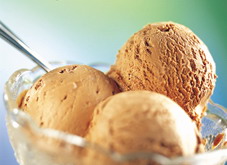How to improve the taste of ice cream
Ice cream is a complex multi-phase system food consisting of ice crystals, an aerated foam structure, frozen high-viscosity structure proteins and fat globules. The micro-architecture of these components has a great influence on its quality. By using low temperature extrusion molding technology, it has positive significance for improving the quality of ice cream. Further cooling after freezing can improve the quality of the ice cream. Ice cream can be frozen from -5 ° C to -15 ° C using low temperature extrusion molding (LTE), especially with the Kombnator X250 from Gerstenberg Schroderd.
Generally, the processing procedures for frozen and hard ice cream are as follows:
1) Stirring 2) Pasteurization 3) Homogenization 4) Cooling and curing at 5 ° C 5) Freezing to -5 ° C and adding air 6) Filling or packaging 7) Hardening to -18 ° C
8) Store and distribute at -30 °C
The most important step in the production of ice cream is freezing. Through this step, the ice cream mixture is changed from the oil-in-water emulsion to the frozen state. Some emulsifier is lost during the period to cause the fat to condense. The air enters the ice cream and spreads out (the air in the ice cream accounts for more than 50%). If water and ice crystals cannot be efficiently fused by coagulated fat, large ice crystals will form, which will reduce the quality of the ice cream as temperature fluctuates.

Mechanical treatment of ice cream at very low temperatures within the Kombinator X250 has a major impact on the micro-architecture and quality of the ice cream, ultimately improving its taste and quality. In this low-temperature extrusion molding process, shearing and lengthening treatment effects can also be achieved, and the size of the inflated foam structure is reduced by 2 and 3 times as much as possible, and the ice crystal size is reduced by 1.5 times. In addition, the size of the fat globules has been increased from 2 祄 to 20 祄, resulting in an increase in the overall number. This series of changes increases the resistance to ice cream, improves shape retention, and reduces water samples other than milk solids.
The use of low-temperature extrusion molding technology to change the dispersed microstructure in ice cream has a positive effect on the quality of ice cream. Compared with conventional frozen and hardened ice cream, the ice cream made is easier to scoop out with a spoon and present a better cream. status.
The reason why it is easier to dig out with a spoon is the smaller ice crystals in the ice cream, which determines its hardness and easy excavation at low temperatures. Moreover, the ice cream made by the low-temperature extrusion molding technology has a smaller structure of the aerated foam, and the creamy taste is better at 0 ° C.
Its high digging force performance can make the aggregated fat globules form an optimal arrangement to further stabilize the ice cream foam. This microstructural change produces a low-fat ice cream that exhibits a high-fat ice cream-like creamy taste.
The quality of the ice cream can be assessed by a melting test, which shows how the fat crystallizes and condenses. If the ice cream contains more fat balls below 20 microns, it will melt longer.
Customer testing has confirmed that the quality of ice cream produced by the Kombinator X250 and low temperature extrusion technology has been greatly improved. Low temperature extrusion technology can bring the following benefits:
â—† Cream effect is better, less ice residue;
â—†The cream effect is improved to optimize the reduction of fat content;
â—† save energy;
â—† Ice crystals are smaller and the shelf life is longer.
